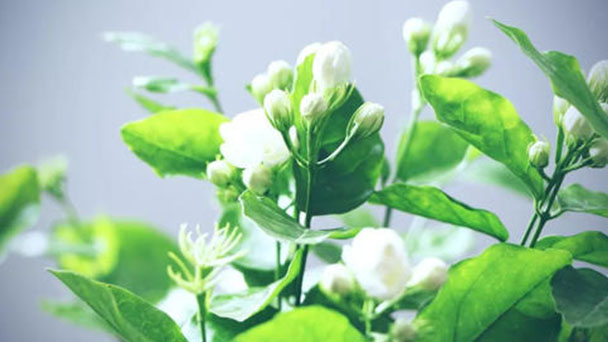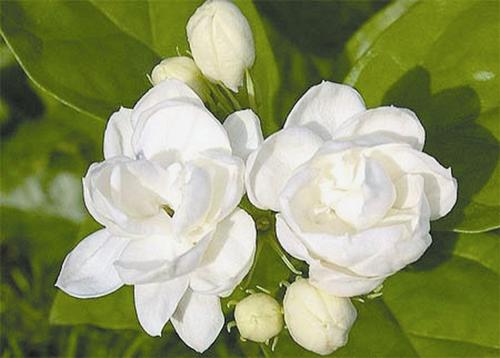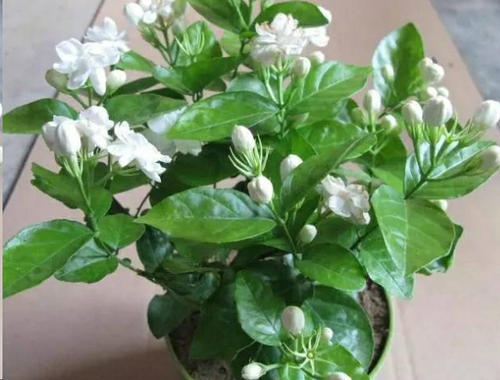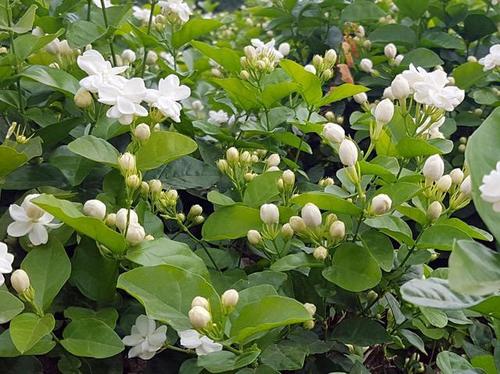Arabian jasmine profile
Written by Maggie
Nov 02 2021

Arabian Jasmine, scientific name Jasmium sambac, is a general name of evergreen shrubs or vines of the genus Coridium in the family Luteoviridae. It is native to India and Pakistan, and has been introduced and widely planted in China. Arabian jasmine likes warm, moist and sunny environments. It has green leaves, white flowers and rich aroma. It is the most common aromatic potted plant. The most famous species of the genus Jasmine is the two-petaled Arabian Jasmine, commonly known as the Arabian Jasmine. Arabian Jasmine has a good health and beauty effect, can be used for diet, can be used in the Arabian Jasmine tea production. The Arabian Jasmine is the national flower of the Philippines, Tunisia and Indonesia, symbolizing love and friendship.
Arabian Jasmine is the national flower of the Philippines, Tunisia and Indonesia. The arabian jasmine Revolution broke out in Tunisia. The Arabian Jasmine planting and tea culture system in Fuzhou City, Fujian Province was listed in the first batch of China's important agricultural cultural heritage.
Arabian jasmine picture

Arabian jasmine characteristics
Stems
Arabian jasmine (Jasmium sambac) is an upright or climbing shrub, reaching a height of 3 m. Branchlets are terete or slightly compressed, sometimes hollow, sparsely pilose.
Leaf
Arabian jasmine (Jasmium sambac) leaves are opposite, simple, leaf blade papery, circle, elliptic, elliptic or obovate, oval, 4-12.5 cm long, 2-7.5 cm wide, both ends rounded or obtuse, base sometimes slightly cordate, lateral veins 4-6 pairs, slightly recessed in the above or concave, convex below, fine veins on both sides often, slightly raised, except often between vein axils with tufted hairs below, the remaining glabrous; Petiole are 2-6 mm long, pubescent, articular.
Flower
Arabian jasmine (Jasmium sambac) is a terminal cyme, usually with 3 flowers, sometimes as many as 5 single flowers; Pedicels are 1-4.5 cm long, pubescent; Bracts are minute, tapered, 4 -- 8 mm long; Pedicels are 0.3 -- 2 cm long; The flowers are very fragrant; Calyx is glabrous or sparsely pubescent, lobes linear, 5 -- 7 mm long; The corolla is white, tube 0.7 -- 1.5 cm long, lobes oblong to suborbicular, 5 -- 9 mm wide, apex rounded or obtuse.
The flowering period of Arabian jasmine is from May to August.
Fruit
Arabian jasmine (Jasmium sambac) fruit is spherical, about 1 cm in diameter, purplish black.
The fruiting stage of Arabian jasmine is from July to September.
Arabian jasmine habits
Arabian Jasmine (Jasmium sambac) prefers warm and moist, and grows best in a well-ventilated, semi-cloudy environment. Soil with a lot of humus in the slightly acidic sandy soil is the most suitable.
Most varieties of Arabian Jasmine are cold and drought tolerant, and are not tolerant to frost, wet waterlogging and alkaline soil. When the temperature is lower than 3℃ in winter, branches and leaves are vulnerable to freezing damage, and they will die if they last for a long time. Deciduous lianas, on the other hand, are hardy to cold and drought.
The geographical distribution of Arabian Jasmine
Arabian Jasmine (Jasmium sambac) is widely cultivated in India, southern China and all over the world. It is now widely planted in subtropical areas. Mainly distributed in Iran, Egypt, Turkey, Morocco, Algeria, Tunisia, as well as Spain, France, Italy and other Mediterranean coastal countries, Southeast Asian countries are cultivated.

Arabian Jasmine propagation methods
Cuttage: in April to October, select mature 1-year branches, cut into with more than two sections of cuttings, remove the lower leaves, inserted in the sand each half of the slotting bed, covered with plastic film, maintain high air humidity, about 40-60 days after taking root.
Slathe: choose longer branches, gently cut in the lower part of the section, buried in a small basin containing sand and mud, often moisturize, start to take root in 20-30 days, 2 months later can be separated from the mother plant into seedlings, another planting.
Growing methods of the Arabian Jasmine
Arabian Jasmine (Jasmium sambac) is native to India, Arabian Jasmine is fond of sunshine. Sufferent sunshine should be guaranteed no matter in summer or winter, so it is called "Arabian Jasmine that cannot be sunburned". Without sufficient sunlight, Arabian jasmine leaves will become larger and thinner, lighter in color, longer in branches, sparser in flowers and lighter in fragrance. Arabian Jasmine is not cold resistant. In winter in the north, it will spend the winter indoors and keep it in a warm sunny place with room temperature at about 15℃. Pay attention to ventilation, often due to poor ventilation in winter caused by fallen leaves and rotting roots.
Arabian Jasmine main value
Arabian Jasmine (Jasmium sambac) has a good health and beauty effect, can be used for diet, can be used in the Arabian Jasmine tea production. Air flow opening section. The volatile oil substances contained in Arabian Jasmine have the functions of relieving pain, relieving depression and dispersing knots, and can relieve chest and abdominal swelling and pain, diarrhea and acute and severe symptoms. It is a good food for relieving pain. Antibacterial and anti-inflammatory. Arabian Jasmine has an inhibitory effect on a variety of bacteria. It can be used internally and externally for the treatment of inflammatory diseases such as red eyes, sore, skin ulcers and so on.

Read Next:
How to Grow & Care for Arabian Jasmine
Latest Updated
- Benefits of Bugleweed - 7 Science-backed Health Benefits
- Bugleweed Dangers & Side Effects - Is It Poisonous?
- How to Plant Evergreen Trees - What You Should Know
- When to Plant Evergreens - Grow Guide for Evergreen Trees
- 12 Wonderful Evergreen Shrubs for Your Garden
- 12 Popular Evergreen Plants with Pictures for Beginners
- When And How To Prune A Lilac Bush Like a Pro
- How to Grow & Care for Lilac Vine (Hardenbergia Violacea)
- Japanese Lilac Tree (Syringa Reticulata) Care & Propagation Guide
- Shumard Oak Pros and Cons - What to Know
Popular Articles
- Winter maintenance of Antirrhinum Majus
- How to Grow Terminalia Mantaly Tree
- How to Grow and Care for Crossostephium Chinense
- How to grow Antirrhinum Majus in spring
- Peristeria Elata (Dove Orchid) Profile: Info & Care Guide
- Underwatered Snake Plant (Sansevieria Trifasciata) - Signs And How To Fix
- How to Care for Brazilian Jasmine Plant (Mandevilla Sanderi)
- How to Grow & Care for Graptopetalum Purple Delight in Summer
- Rosa Chinensis (China Rose): Plant Growing & Care Tips
- How to Care for Baby Sun Rose (Aptenia Cordifolia)